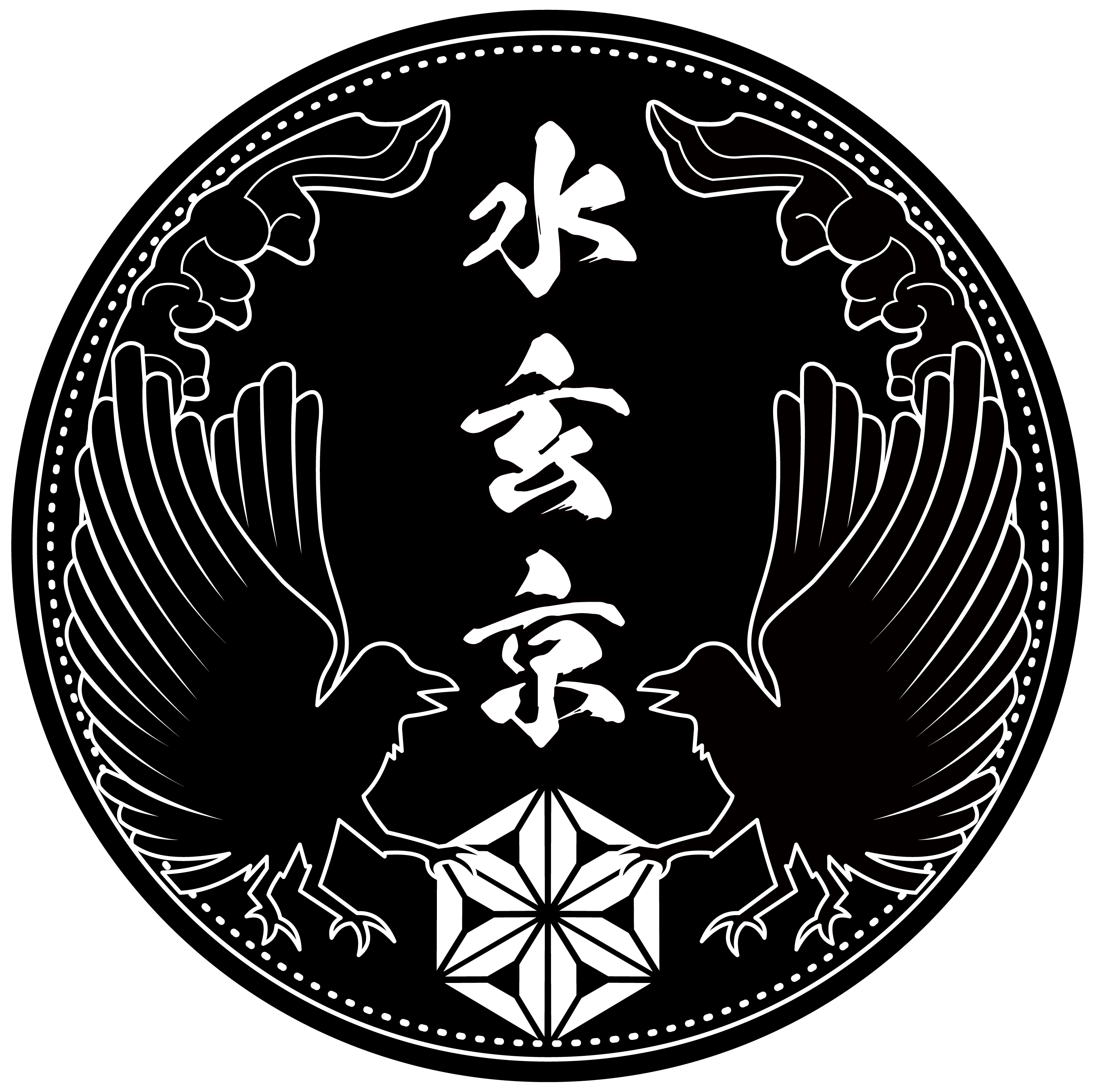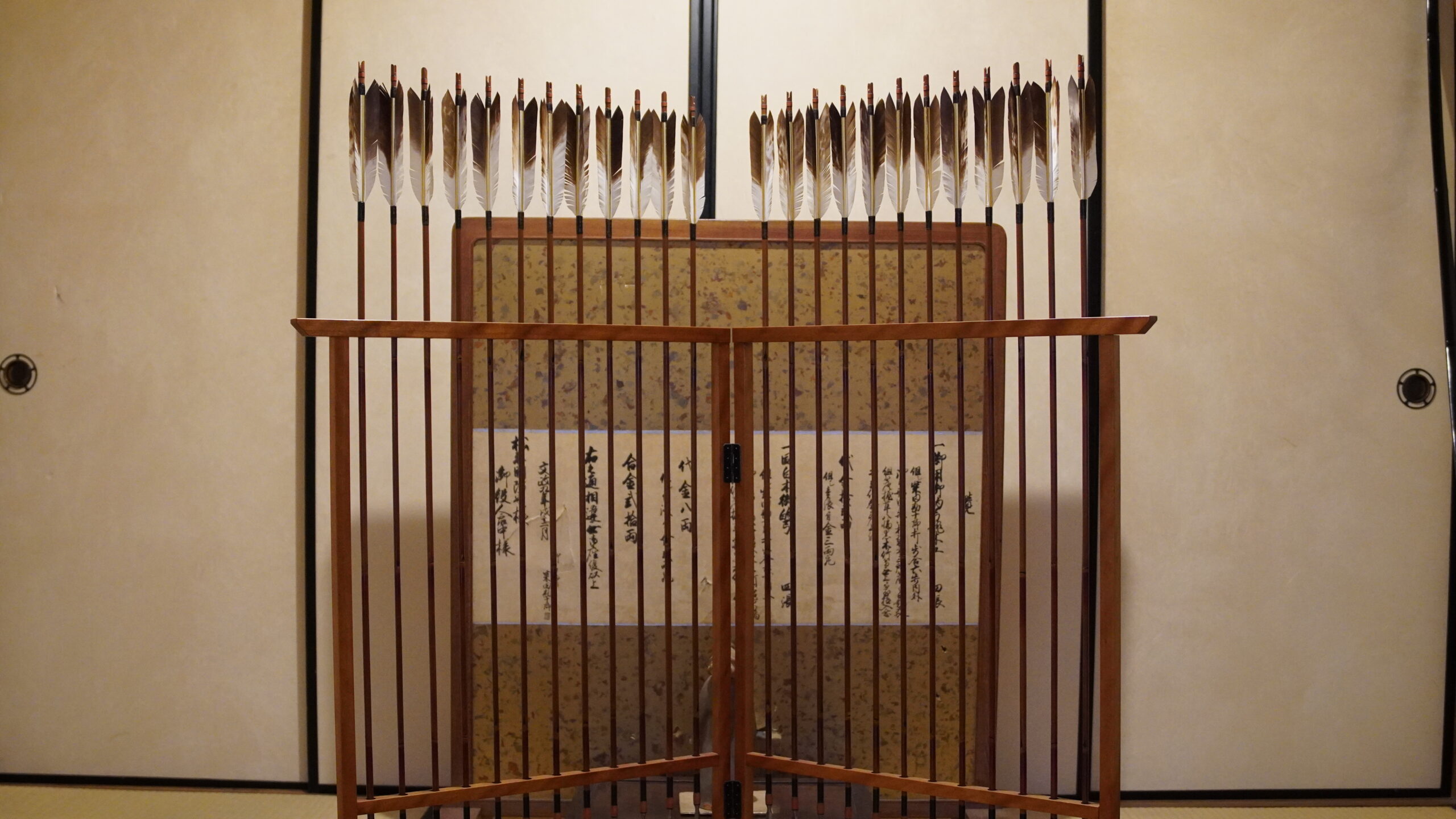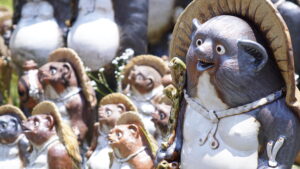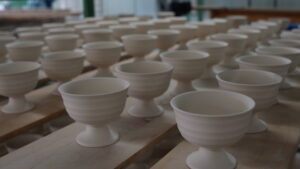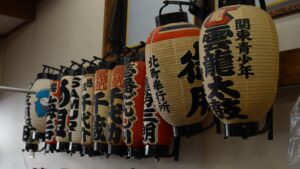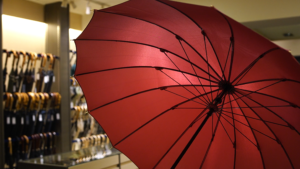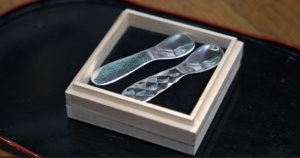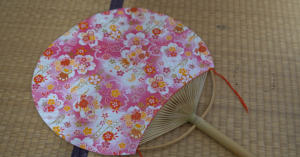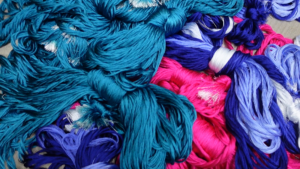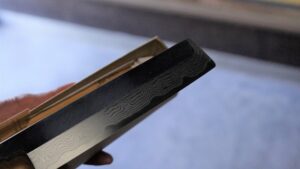Making Process of Kyoto Bow
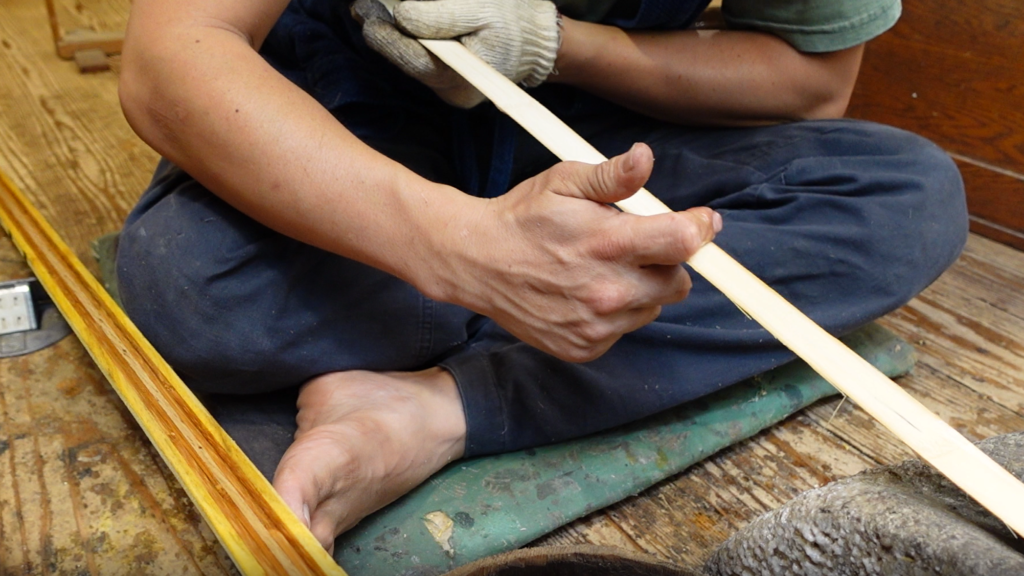
Pasting-up
Three layers are created by using multiple woods. The use of various materials makes it strong and supple.
Shaving process
The thickness of the craft is adjusted according to the strength of the bow. The craftsmen’s expressions are serious as they make adjustments in millimeter increments.
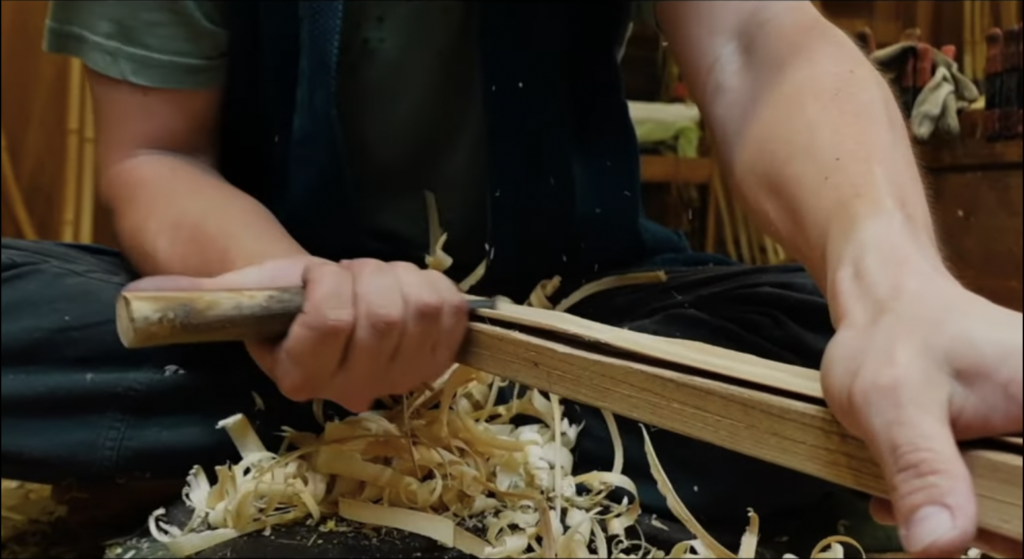
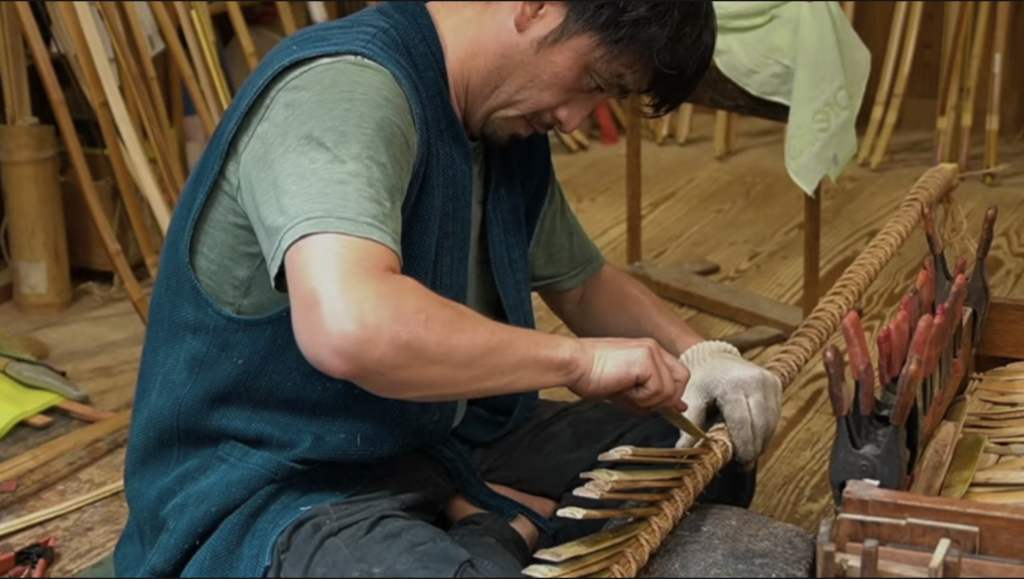
Stringing a Kyoto bow
This process brings life to the bow. The hemp rope is wrapped around the entire bow so that it is evenly spaced. Bamboo wedges are then driven into it to make it warp. It takes about 15 minutes for the glue to harden. The tension in the workshop is intence during this process.
Final Process
This is the important point of the bow making. The bow is placed on the stand and the shape of the bow bounces back in the opposite direction. Because of its natural material, the work is breathtaking, as no one never knows when the bow will rebound.
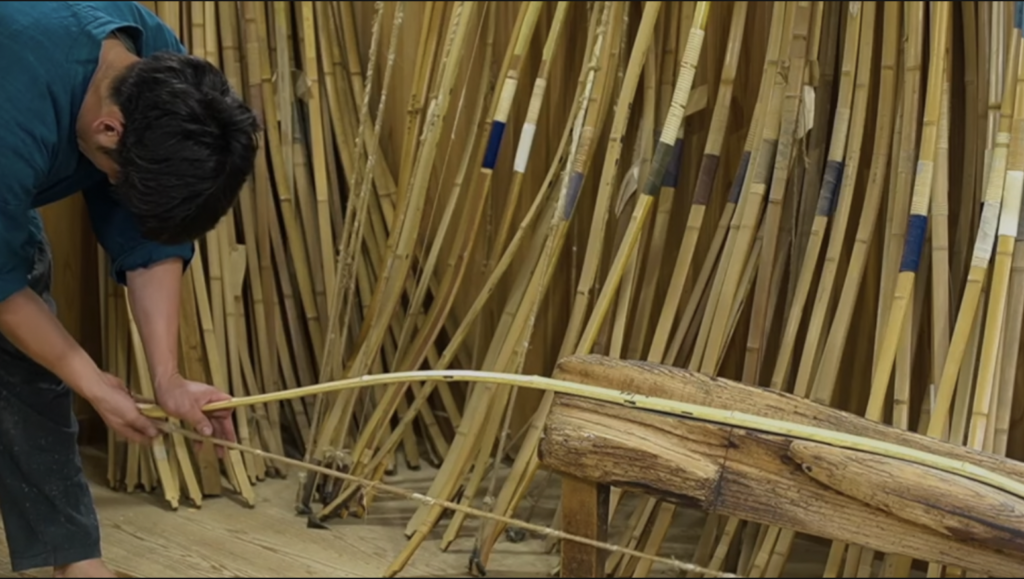
You can watch the process of making Kyoto bow on YouTube!
The Blueprint of Kyoto Bow is in My Head.
Kyoto bow are one of Japan’s representative bows and are highly trusted by archery enthusiasts. Every single step of the process is a challenge, and a sense of tension is always in the air in the workshop. From the cutting of the bamboo to the finishing process, there are six major processes involved in the creation of a Kyoto bow. The most spectacular of these processes is the shooting. It takes only 15 minutes for the glue to set and the bow is warped. There are no blueprints for the entire process, including shooting, and all the attention is focused on bow making, relying on the experience as all bamboos are in different conditions. The characteristic of Kyoto bow bows is that, compared to bows made in other prefectures, the curve part where the bow is held is smaller, creating a beautiful curve when the arrow is released. This balance is considered optimal for releasing the arrow with great speeds and has attracted many archers.
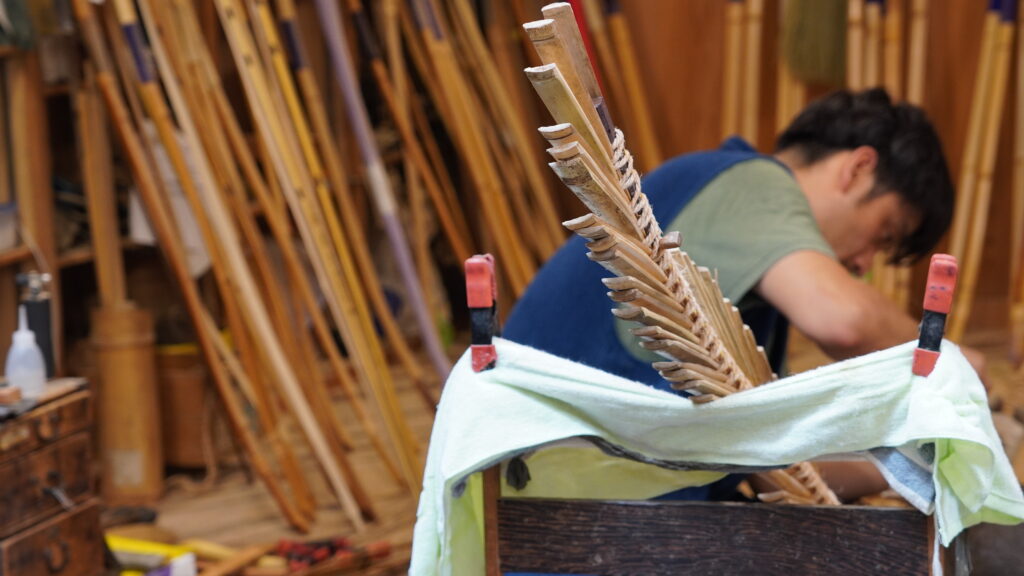
Only ONE Shop of Kyoto Bow
Today, Shibata Kanjuro bow shop is the only bow store that continues to make Kyoto bows. The origin of the Kyoto bow dates back to the Warring States period in 1534. The first head of the family served the Satsuma clan as an archer, and from there he moved to Kyoto to serve the Tokugawa clan, where he was given the title of “Onyumishi” (royal bow manufacturer and archer). His name spread so widely that there is a rumour that the bow was used by Nobunaga Oda against the forces of Mitsuhide Akechi in the Honnoji Incident was the Kanjuro Shibata’s bow. In 1889, Kanjuro Shibata was appointed by the Imperial Household Agency, and he also produced the sacred treasures for the “Shikinen Sengu” ceremony held every 20 years at the Ise Jingu Shrine. Today, the 21st generation of the Kanjuro family continues preserve the name of the Kanjuro, and in 2013, 59 Azusa Yumi bows were delivered to the shrine.
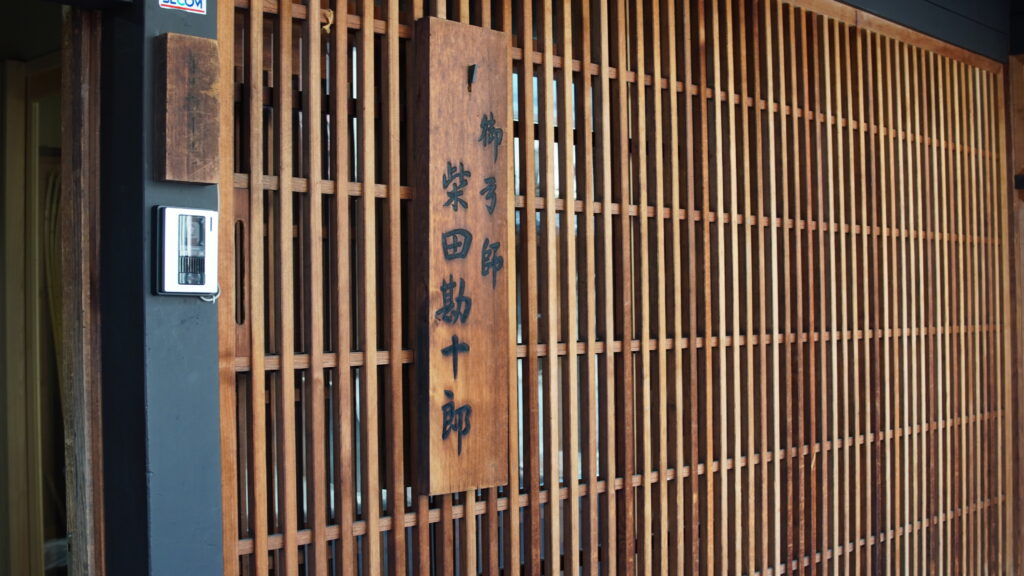
Kyoto bow that fits each and every one of us
Kanjuro Shibata said “I think the term technician rather than craftsman is more appropriate”. He says that he does not want to add the value of art or traditional craftsmanship to his bows since he hopes that more people will use them more rather than appreciating the bow. His attitude of making bows with an emphasis on practicality rather than its appearance shows that he is thinking about his clients first. Additianlly, apart from bows for Kyudo, we also produce decorative bows called “Utsubodai,” which belong to the category of fine arts or works of art. The time goes back to the Warring States period. It is said that the bow was placed behind the shogun at his headquarters. As far as Mr. Kanjuro knows, only three pieces of this decorative bow have been purchased in the world, and only one in Japan. We interviewed Mr. Munehiro Shibata, the future 22nd and son of the 21st generation of the family, to learn more about the Kyoto bow and how it is made. Please take a look at the story of the archer who will inherit the future of Kyoto bow.
The quality of the bow has not faded away since the Warring States period, and the techniques have been passed down today. It is still attracting its fans all over the world. If you are interested in the bow for Kyudo, please visit our workshop. You can purchase their decorative bows at the Suigenkyo online site, so please take a look from the link below.
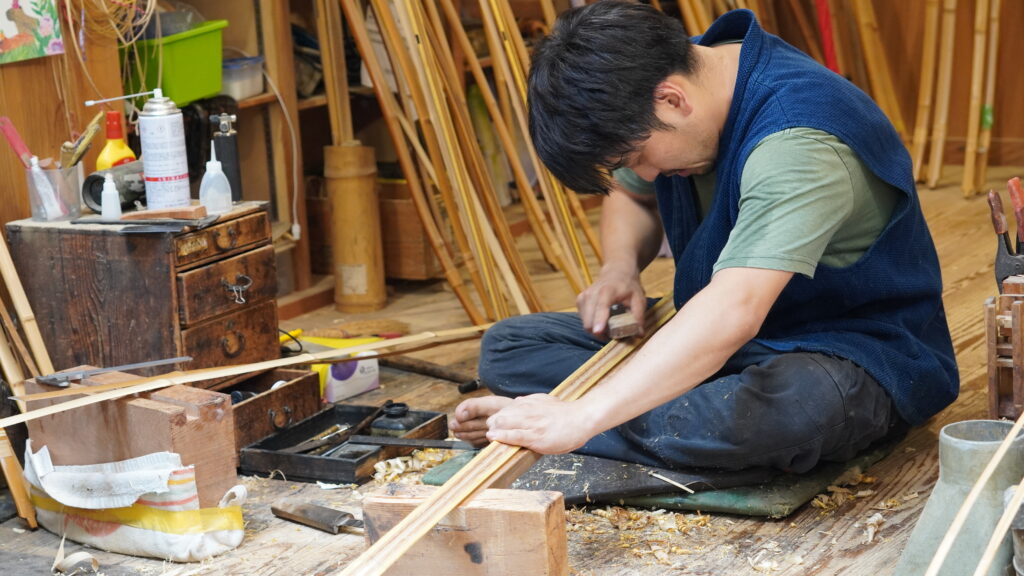
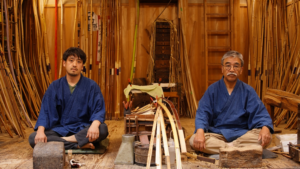
Suigenkyo Online Store
We offer a wide range of products including tableware, accessories, and interior design.
Suigenkyo YouTube
You can see the making process of the products listed on Suigenkyo Online Store.
